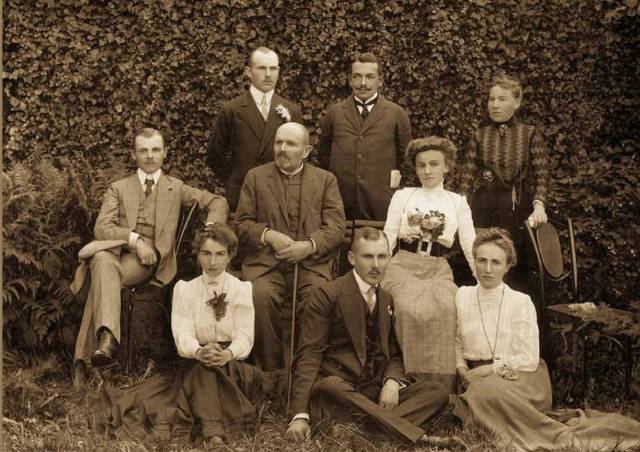Irena Aniela Haack, née Bojańczyk, was born in Włocławek on October 2, 1882. She was the daughter of Wincenty Bojańczyk, a brewery owner, and his wife, Helena, née Kocent-Zielińska. She had two brothers: Jerzy and Michał, and two sisters: Łucja and Maria.
In 1904, she married Artur Haack, owner of the Dembice (now Dębice), Kruszyny, and Kruszynek estates near Włocławek. She had two children: a son, Włodzimierz, and a daughter, Maria. She was a person of strong character and brilliant intelligence. She spoke several foreign languages and played the piano well. She welcomed family and friends into her home.
She was a member of the United Circle of Landowners and the Kujawy Branch of the Polish Tourist Society in Włocławek. She participated in agricultural exhibitions. She was involved in various social work, including providing support for the Polish Army, which was being formed after Poland regained independence, helping refugees from the East, and organizing summer camps for children from impoverished working-class families. She also financially supported the Włocławek Scouts. Irena Haack also contributed to the enrichment of the collections of the Kujawy Museum (now the Museum of the Kujawy and Dobrzyń Region) in Włocławek. For example, in 1939, she donated three paintings by Henryk Sokołowski, a landscape by Ludwik Bouchard, and the painting "Chrysanthemums" by Leontyna Płonczyńska.
In 1904, the Girls' Economic School was founded in Kruszynek, led by the renowned educational activist Jadwiga Dziubińska. Artur and Irena Haack donated the manor house and its surrounding garden for the school's needs and also supported it financially. The school operated until the outbreak of World War I.
After her husband's death in 1919, until her children reached adulthood, Irena Haack ran the estate alone. She also ran the family brewery, which was transformed in 1921 into a joint-stock company, "Browar i Słodownia we Włocławku S.A.", becoming one of its main shareholders and serving as president of the management board.
After the Germans invaded Kujawy in 1939, Irena Haack was evicted from the Dembice estate. She had to leave within 24 hours, carrying two suitcases. She could have avoided this by signing the Volksliste (Volksliste), which the Germans urged her to do because of her German married name, but she naturally refused. Her son, Włodzimierz, a second lieutenant in the cavalry reserve, was captured after the defeat in the September Campaign and sent to Oflag VIIA in Murnau. She settled in Warsaw in an apartment belonging to friends in the Old Town, where she survived the Warsaw Uprising. After the capitulation, she marched with insurgents and civilians to the camp in Pruszków. Along the way, a German guard tried to shoot her because she was walking too slowly, but she bought her way out with a gold wedding ring. The house on Brzozowa Street where she lived was completely demolished.
After the war, she settled in Włocławek in the home of her brother, Michał Bojańczyk. She served as curator of the family brewery, then a bankrupt company. From 1946 to 1948, she lived in France with her sister, Maria Rajchman. From 1960, she lived in Warsaw with her daughter, Maria Sulimierska, and her family. She died in Warsaw on January 30, 1965. She was buried in the parish cemetery in Kruszyn, next to her husband, Artur Haack.



 Places
Places Guides
Guides Map
Map Outdoor games
Outdoor games Trails
Trails Events
Events Mobile app
Mobile app Contact
Contact




